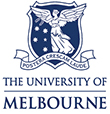Mechanistic insight into the induction of liver tissue-resident memory CD8+ T cells by glycolipid-peptide vaccination
Authors:
- Chua, Yu Cheng
- Draper, Sarah L.
- Le, Shirley
- de Menezes, Maria N.
- Ganley, Mitch
- Ge, Zhengyu
- Lee, Ariane
- Phabmixay, Taylah
- Hirschmann, Daria
- Robinson, Sage A.
- Tan, Peck Szee
- Tullett, Kirsteen M.
- Anderson, Regan J.
- Jayasinghe, Dhilshan
- Cozijnsen, Anton
- Lahoud, Mireille H.
- Caminschi, Irina
- Beattie, Lynette
- McFadden, Geoffrey I.
- Larsen, David S.
- Kaisho, Tsuneyasu
- Gras, Stephanie
- Hermans, Ian F.
- Compton, Benjamin J.
- Heath, William R.
- Painter, Gavin F.
- Holz, Lauren E.
Details:
Cell Reports, Volume 44, Issue 2, 2025-02-25
Article Link: Click here
We recently demonstrated that vaccines comprising antigenic peptides conjugated to a glycolipid agonist, termed glycolipid-peptide (GLP) vaccines, efficiently generate substantial numbers of long-lived CD8+ liver-resident memory T (Trm) cells that are crucial for protection against malaria liver-stage infection. To understand the underlying mechanism, we examined the prerequisites for priming, differentiation, and secondary boosting of liver Trm cells using these GLP vaccines. Our study revealed that generation of long-lived liver Trm cells relies on CD8+ T cell priming by type 1 conventional dendritic (cDC1) cells, followed by post-priming exposure to a combination of vaccine-derived inflammatory and antigenic signals. Boosting of liver Trm cells is feasible using the same GLP vaccine, but a substantial delay is required for optimal responses due to natural killer T (NKT) cell anergy. Overall, our study unveils key requirements for the development of long-lived liver Trm cells, offering valuable insights for future vaccine design.


